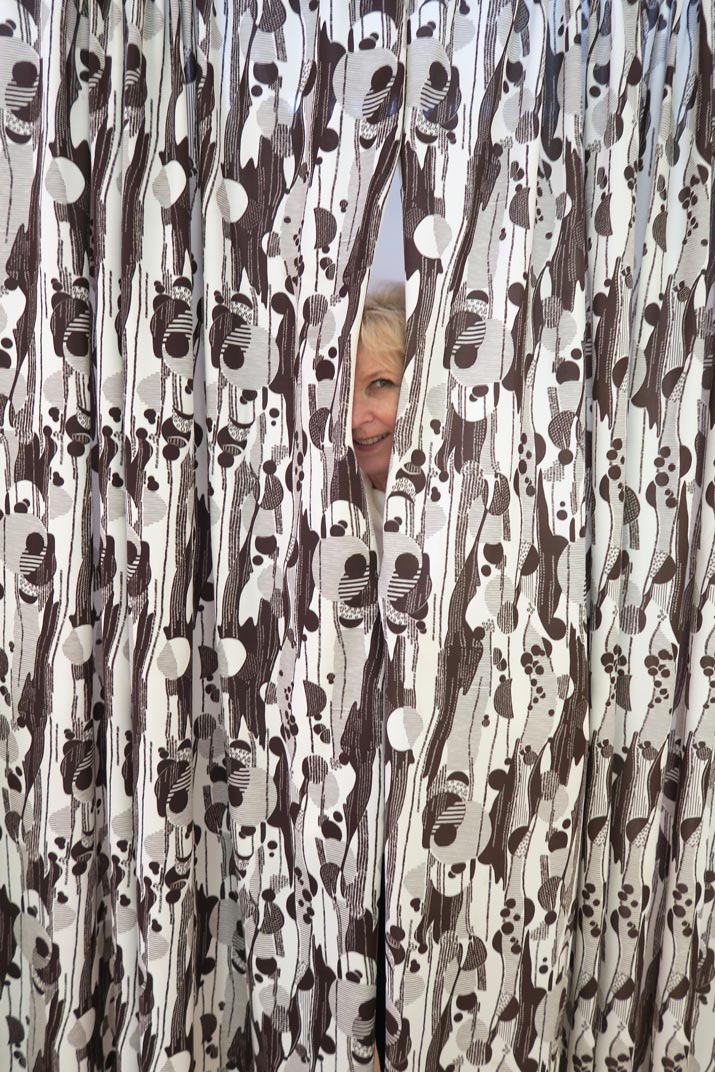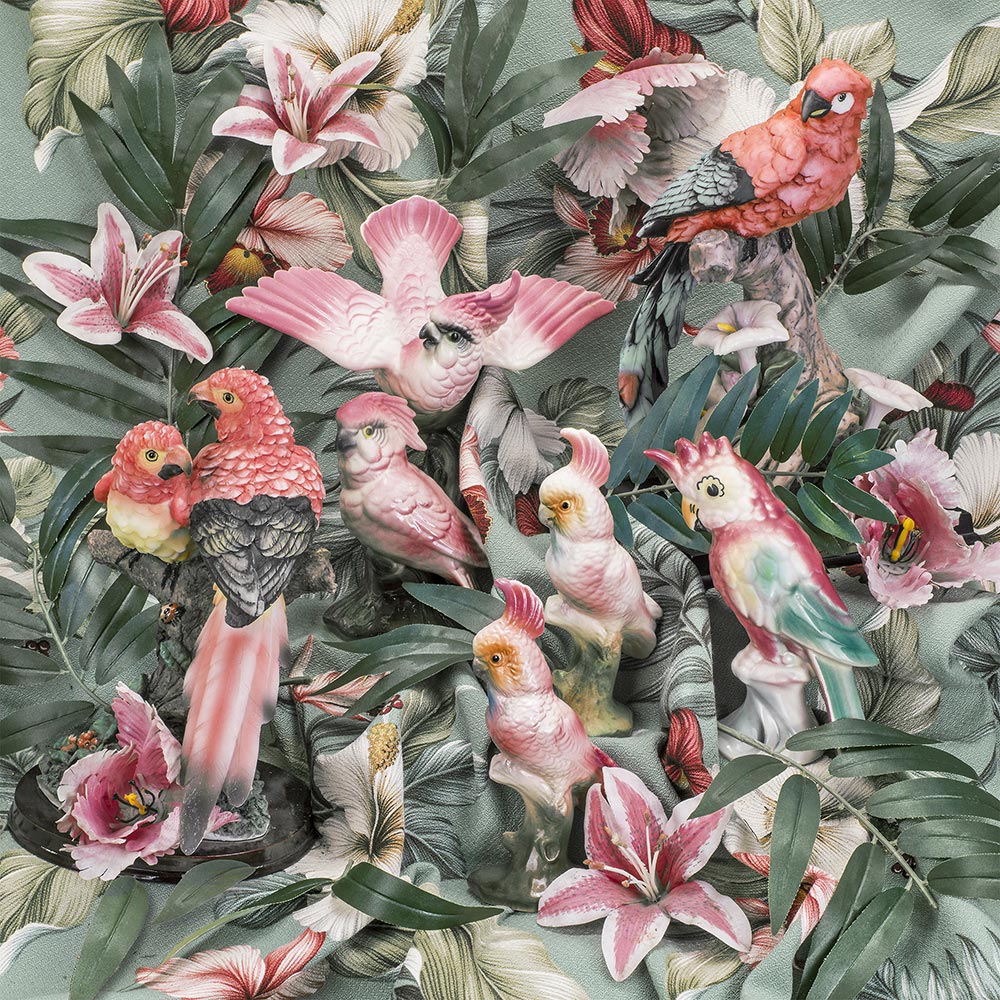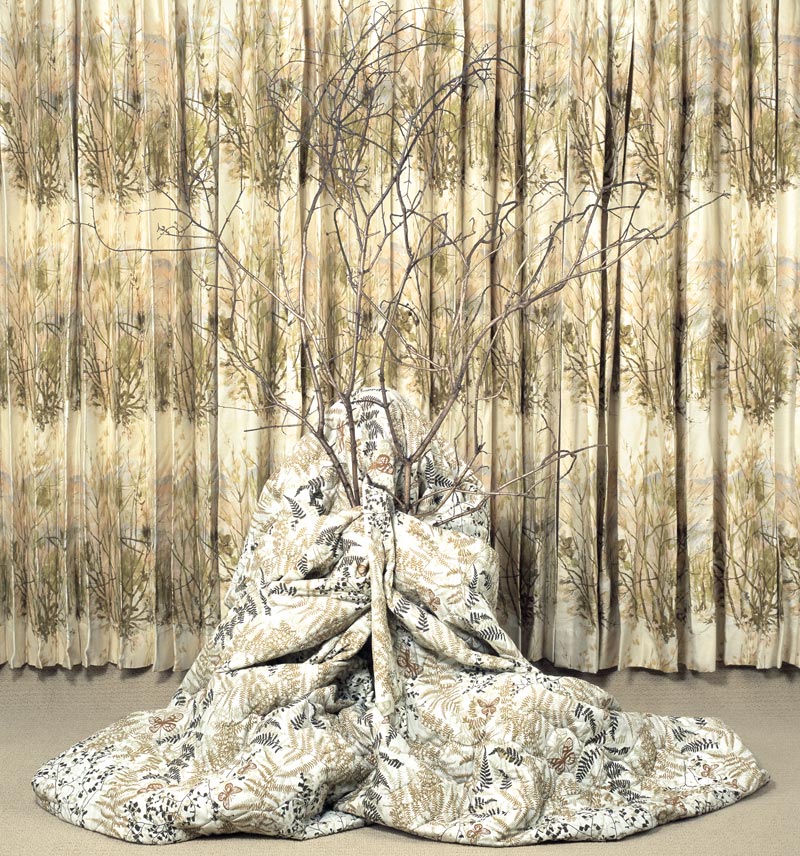This article is presented in partnership with Kemper Museum of Contemporary Art.
Walk into Patty Carroll’s studio in Kansas City’s Crossroads district and you might feel a sense of craft envy. She has selected a wide array of fabrics and adornments, in a creative mix of textures and colors that she is piecing together for her project.
“The work is based on the idea of women and crafting.” Patty says. “You can kind of see it, and the display is going to be a whole room and it takes on the idea of quilt squares and how that takes over your life and your space,” she says.
Carroll is currently in her third year as artist-in-residence at Studios, Inc. Her work is also on display until May 20 at the Kemper Museum of Contemporary Art in Kansas City, and she has an upcoming show at Albrecht-Kemper in St. Joseph early next year.
She spoke with us this spring about her current projects and career, which highlight themes about women.
You are currently the Artist in Residence at Studios Inc. in Kansas City. What are you working on while in Kansas City?
We were supposed to come so my husband (Tony Jones) could take a temporary position. He was the interim presidenct at the Kansas City Art Institute and that was supposed to be for 18 months. That was three years ago. So we’re going to be here a little while longer. We are having a lot of fun helping the school become bigger and better. And then I applied for this residency program. It’s worked out really well for us. People here are so nice and it was shocking for me coming from Chicago. [laughs]
Your “Anonymous Women” work received a lot of recognition—here and overseas. What was your intention for the project?
It started when we moved to England and suddenly I was in this…not just foreign culture, but a culture known through my domestic presence and in a more traditional society that is more prevalent. So I was going through this identity crisis. My work before that was based on American culture.
So I started making these photographs where a woman was only known for something on her head related to the home. That’s how it started.
My intention of this point was this weirdness that was going on not only with me, but with many women who are only known with how they are related to a domestic status.
Then we moved back to the States. This whole thing is about home, returning home, looking for a home, finding home and what’s there. Women are nesters. We have to create space that is safe and warm and so when we returned back to the states we found this house that was a 1950s ranch house. So I started obsessively combing flea markets and estate sales and antique sales and making it into its 1950s glory.
At the same time the Iraq war started and my niece, who is my goddaughter, was sent to Iraq and I started thinking about [how] women in Iraq were not going to have homes. And here I was obsessing about my home and the idea of home and we were destroying [homes]. I was taken with this issue and what it means in a bigger context and now [it’s] even more relevant because there are refugees who have nowhere to live and these immigrants who are trying to make a home in a new place and we don’t let that happen. My work is about this ironic relationship of we women who are constantly making homes and making it so perfect and at the same time people are facing homelessness for a variety of reasons.
Your work is prolific – you have been in exhibits all over, authored books, received numerous awards and been printed in many artistic publications. Do you have a project that has stayed with you over the career? One perhaps that you look back on now and realize it encapsulates what you do?
It is probably this one about the women. There are two sides of me. There is the external photographer going out to world and this internal state for women. The external side is very interested in the part of the American culture that is like a vacation.
I had a hot dog project where I would go around and photograph hot-dog stands. It started out as mom-and-pop businesses and lowly food that became an indicator of what American culture is and we still like that. We like anti-intellectualism and the low-class and in some ways what is purely democratic.
The work that I’ve developed over the years has always been about color, intense, saturated color.
You are splitting time between Kansas City and Chicago. Are you working on a project there as well?
Related Posts
April 4, 1928
Marguerite Ann Johnson was born in St. Louis. Better know as Maya Angelou, she went on to be nominated for Pulitzer Prize in poetry and a Tony Award and to win three Grammys.
Artful Communicators
Rita Orr has a winsome and whimsical series of silkscreens featuring ladies wearing hats, including Lap of Luxury above, and another colorful series of buildings she has seen, such as bungalows, cozy homes, and others.







